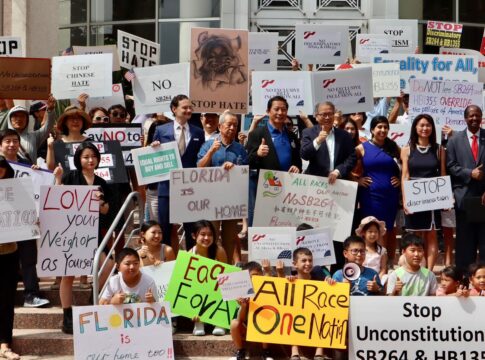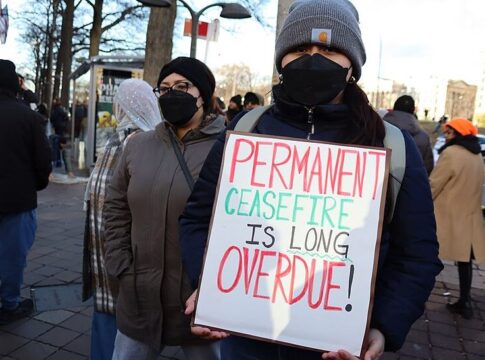by Akemi Tamanaha, Associate Editor
Asian American activists, professionals and leaders are working hard to ensure that every Asian American is counted in the 2020 census. The information gathered in the 2020 census will have a significant impact on the resources available to the Asian American community.
Filling out the US Census might not seem like the most glamour of civic duties. The census has often been subject to scrutiny and skepticism. It has been the butt of jokes in SNL skits.
But, there is plenty at stake each decade the census is taken. The information collected in the census is used to allocate funding for public programs. Its population count is also used to reapportion seats in Congress. Whether or not California keeps a seat in the House of Representatives, will be determined by the census.
The information collected in the census is used to allocate funding for public programs (e.g. education), programs that Asian Americans use. For Asian Americans, a group that has been historically undercounted, accurate census data is important.
LATEST STORIES
The Census Barriers Attitudes and Motivators Study found that Asian Americans often do not participate in the census because they are not familiar with it. Many do not participate because they are afraid of how the information will be used.
The US Census Bureau wants to change that. It has launched its own public outreach campaign, titled “Shape Your Future. Start Here.” The goal of the campaign is to encourage undercounted and underrepresented minority groups to participate in the census.
The Census Bureau gave 14 advertisement agencies contracts to create informational ads about the census. It hired TDW+Co, a cross-cultural and multicultural advertising agency, to develop ads for the Asian community. On January 14, the Census Bureau released several Asian language ads on tv, in print and in digital media that TDW+Co had produced.
Asian American leaders and activists have also been working hard to encourage census participation within their local communications.
In Los Angeles, 21 organizations led by the Asian Pacific Policy and Planning Council came together to form the AAPI Census 2020 Collaborative. In the San Francisco Bay Area, Filipino groups formed the Bay Area Filipino Complete Count Committee (BAFCCC). Organizations like Chinese for Affirmative Action have also been conducting their own outreach program.
Tim Wang, the founder and chief strategist of TDW+Co; Eva Poon, a policy advocate for CAA; and Luisa Antonio, the co-chair of BAFCCC spoke with AsAm News about their efforts to ensure an accurate count.
Addressing Fears
Many Asian Americans do not want to participate in the census because they are afraid of how the information will be used. Organizations like the BAFCCC and CAA are working hard to assuage those fears.
Much of the fear, especially for those who are undocumented, stems from a citizenship question the Trump Administration’s proposed over a year ago. The question asked whether or not a person was a citizen of the United States.
Activists argued that the question would discourage people who were afraid of being deported from participating in the census. Some critics of the question even argued that the administration was trying to intimidate undocumented immigrants.
Asian American civil rights groups lobbied to help remove the citizenship question from the census. On June 27, 2019, the Supreme Court ruled that the question violated federal law. The ruling was ultimately a win, but both Poon and Antonio say the damage has already been done.
“We’re really trying to get the word out that the question has been removed, but basically the harm has already been done,” Poon said.
Many Asian Americans have expressed fears that the information could be accessed by ICE, the FBI, parole officers or even landlords.
The landlord conundrum is specifically relevant to Asian Americans in San Francisco. The cost of living in the Bay Area is steep. To save money, many large families live in small crowded houses. Poon and Antonio both say they have spoken to Asian Americans who are worried that their landlords might figure out that they have more people living in their homes than they should.
Antonio said groups want to emphasize that the information collected by the Census Bureau is confidential. The specific individual information they give the Census Bureau won’t be released for another 70 years.
The advertisements released as part of the “Shape Your Future. Start Here.” campaign do not directly address these fears. Wang said that TDW+Co considered and acknowledged the fears of the Asian American community when crafting their ad campaign.
“I don’t want to discredit the fears that community members have,” Wang said.
The agency decided to focus its messaging on the motivations for and benefits of participating in the census. The goal is to emphasize that the population counts in the census help to determine how much funding an area receives for public services that Asian Americans use like education or medical care.
Tackling Language Barriers
The census awareness efforts must also deal with language barriers. The paper questionnaire will only be available in English and Spanish. The questionnaire will be available online and over the phone in 13 different languages: English, Spanish, Chinese, Vietnamese, Korean, Russian, Arabic, Tagalog, Polish, French, Haitian Creole, Portuguese and Japanese.
However, the 13 different languages do not cover all Asian languages spoken in the United States. A hotline will be available in 59 languages, but many might not know how to access it. Poon says that the multilingual online questionnaire may also be difficult to access for Asian Americans who do not have internet access or who have difficulty using the internet, like the elderly.
This means it is all the more important that information disseminated prior to the start of the census be translated as accurately and as widely as possible.
TDW+Co has released ads in six different Asian languages: Mandarin, Cantonese, Tagalog, Korean, Japanese and Vietnamese. According to an article in the LAist, the Census Bureau was not able to fund ads with more Asian languages.
Wang says that the agency is partnering with “dozens upon dozens” of Asian Americans organizations across the country that will help be trusted advocates for the census.
In California, the CAA has called on the states to give funds allocated for census outreach to smaller grassroots organizations that cover neglected Asian language groups.
Groups like the BAFCCC are also working with local governments to make sure that information is translated accurately. Antonio says it is important that the translated information addresses cultural and lingual nuances.
For example, she says the BAFCCC notified San Mateo County about a flyer that translated the word policy to look like policia, which means police.
The Power of Familiar Faces
Asian American representation in census outreach programs is important. Poon, Wang and Antonio all believed that some of the best census outreach is conducted by trusted members of the local community.
“Who would know your community better than the people who live there?” Antonio said.
The BAFCCC and other organizations are working with the Census Bureau on census employment outreach. The BAFCCC held a census job fair to recruit members of the Filipino community. Antonio says that Asian Americans are more likely to respond to census counters who look like them.
TDW+Co made sure to authentically represent Asian Americans in their informational ads. For example, if a television ad in Japanese was about a Japanese American father and daughter, the agency made sure to cast Japanese Americans. Wang credits the US Census Bureau with helping the agency authentically depict the Asian American community.
“It was the US Census Bureau that was very very adamant about making sure that every single person that we casted as talent for all of our tv, radio and print ads were authentically representative of the communities we were depicting,” Wang said.
Different Avenues of Access
Asian Americans working on census outreach are looking beyond advertisements, tabling and other traditional informational events.
The CAA is working on an outreach program that uses WeChat, a place where many Chinese Americans get their information.
Wang says TDW+Co worked on a program called Statistics and Schools. The program helped create a K-12 curriculum that emphasized the importance of household statistical data collection. The goal was to teach kids why it was important for their parents to fill out something like the census.
The Statistics and Schools curriculum is also woven into TDW+Co’s census ads. In television ads, Asian American children can be seen teaching their parents about the census.
Wang says that his own son has inspired much of his work on census outreach.
“I have a four and a half-year-old son, and I’m motivated by what the world will look for him ten years from now when he’ll be a teenager,” Wang said. “What will what we do in this decade through the 2020 count mean for him?”
Americans will receive an invitation to participate in the census by April 1, which is Census Day. The census can be filled out online, over the phone or by mail.
AsAmNews has Asian America in its heart. We’re an all-volunteer effort of dedicated staff and interns. Check out our new Instagram account. Go to our Twitter feed and Facebook page for more content. Please consider interning, joining our staff or submitting a story.









